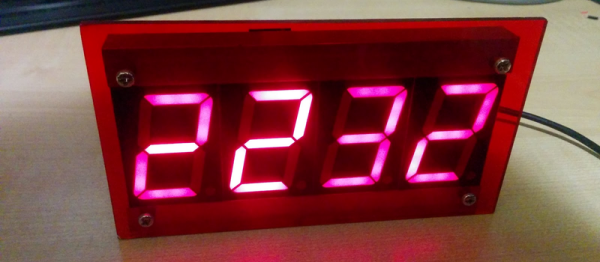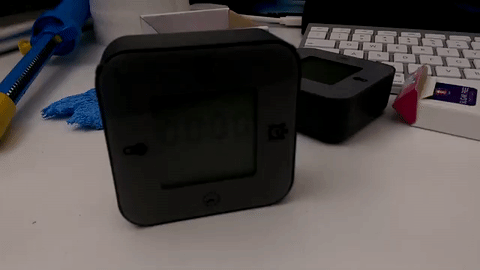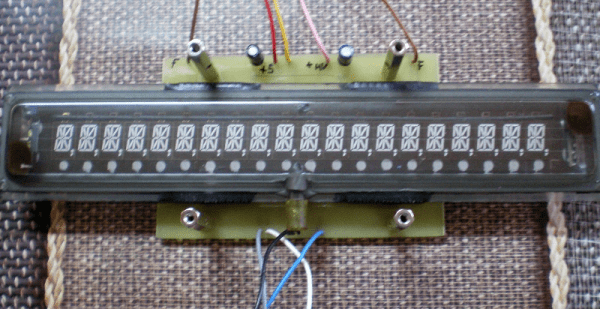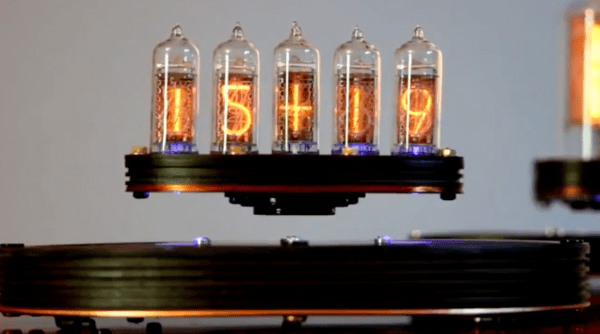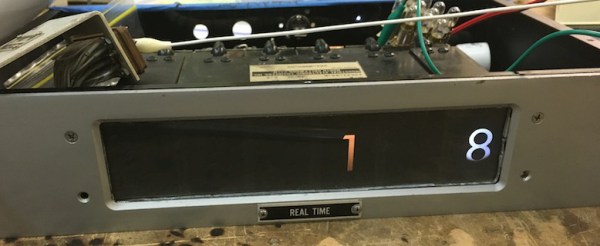If you haven’t jumped on the ESP8266 bandwagon yet, it might be a good time to get started. If you can program an Arduino you have pretty much all of the skills you’ll need to get an ESP8266 up and running. And, if you need a good idea for a project to build with one of these WiFi miracle chips, look no further than [Ben Buxton]’s dated, but awesome, NTP clock.
clock636 Articles
Quick Hack Creates A Visual Beep Alarm
Sometimes a simple modification is all it takes to get something just the way you want it. The Ikea LÖTTORP clock/thermometer/timer caught [Mansour Behabadi’s] eye. The LÖTTORP has four functions based on its orientation. [Mansour] loved the orientation feature, but hated the clock’s shrill beeping alert. Visual beeps or alarms can be handy when working with headphones or in a loud environment. With this in mind [Mansour] decided to crack his LÖTTORP open and rewire it to produce a visual beep for the timer function.
The clock is backlit, so [Behabadi] decided to use the backlight for his visual beep. Once the inside was exposed, [Behabadi] noticed that the buzzer’s positive terminal was wired to the red LED anode — a clever design choice, since the red LED is only used with the clock function. Simply removing the buzzer and soldering its terminal to the noticeable green LED provided the desired effect.
We meant it when we said he cracked it open. The screws were hidden behind the front plate, so the handyman’s secret weapon helped in reassembling the clock after this quick hack.
We’ve featured plenty of classy, unique, and ingenious clocks on Hackaday, so this modification is in good company.
VFD Clock Only Speaks Romanian
There’s no shortage of clock projects, but [niq_ro] has his own take using a vacuum fluorescent display (VFD), and Arduino, and a pair of MAX6921 ICs. Those chips are made to drive a VFD, and the use of two of the ICs required a bit of work. The Arduino is not a great time keeper, so the clock also uses a DS3231 clock module and a humidity and temperature sensor.
The clock is in Romanian, although there are some options for different text. You can find the code on GitHub and can see the result in the video below.
Wake Up With A NeoPixel Sunrise Alarm Clock
Like many of us, [Lee] wakes up every morning grumpy and tired. Once he decided to try to do something about it, he settled on making a sunrise alarm clock using NeoPixels. Over the course of thirty minutes the clock illuminates 60 NeoPixels one by one in blue mode to simulate a sunrise.
The clock has three modes: 30-minute sunrise, analog time display, and a seconds counter that uses the full RGB range of the LEDs to light up one for each passing second. It runs on an Arduino Pro Mini knockoff and an RTC module for the sake of simplicity. [Lee] chained NeoPixel strips together in five rows of eight, which allowed him to use a 3×5 font to display the time. The only other electronics are passives to protect the LEDs.
NeoPixels are great, but powering them becomes an issue pretty quickly. [Lee] did the math and figured that he would need 3.4 A to drive everything. He found a 3-outlet USB power adapter that delivers 3.4 A total while shopping at IKEA for an enclosure. [Lee] took his first Instructable from beginner to intermediate level by cracking the adapter open and using two of the USB ports wired in parallel to provide 5 V at 3.4 A. [Lee] has the code available along with detailed instructions for replicating this build. Be sure to check out the demo after the break.
We love a good clock build around here, especially when they involve Blinkenlights. For those less interested in building an alarm clock, here’s a word clock that pulls time and weather data with an ESP8266.
Continue reading “Wake Up With A NeoPixel Sunrise Alarm Clock”
Puzzlingly Simple Tutorial On GPS Time Corrected Clock
We’re not sure if [Derek Lieber] is messing with us or proving a point. Why are you doing this [Derek]? We know there’s technically enough information to build the clock. You even included the code. Couldn’t you have at least thrown in a couple of words? Do we have to skip straight to mediaglyphics?
Anyway, if we follow the equation. The equation… If you take a gps module, a 7 segment display with an HT16K33 backpack, a digital potentiometer, a piezo, and a boarduino we suppose we could grudgingly admit that these would all fit together to make a clock. We still don’t like it though, but we’ll admit that the nice handmade case was a nice touch, and that the pictures do give us enough details to do it ourselves.
It was also pretty cool when you added the Zelda theme song as an alarm sound. Also pretty neat that, being GPS corrected, there’s no need to ever set the time. We may also like the simplicity of the only inputs being the potentiometer, which is used to set the alarm time. It’s just. Dangit [Derek]. Nice clock build, we like it.
You May Have A Nixie Tube Clock, But Can Yours Levitate?
Nixie tubes, electromagnets, levitation, and microcontrollers — this project has “Hackaday” written all over it!
Time Flies: Levitating Nixie Clock comes from [Tony Adams], and uses a lot of technology we’ve seen before, but in a new and interesting way. A nixie tube clock is nothing new, but using electromagnets to levitate it above a base certainly paired with inductive coupling to transmit power using no wires make this floating nixie build a real treat.
Continue reading “You May Have A Nixie Tube Clock, But Can Yours Levitate?”
Unusual 72-Bulb Display Mechanism Found In Vintage Clock
It’s hard to beat a vintage clock for something that you can hack, and that your significant other might actually let you display in your home. It’s practical and it’s art all at the same time! But, finding that perfect vintage clock for restoration can be a bit tricky. A crowd favorite is to choose something with intricate mechanisms and gears — the motion of a mechanical display is just so fascinating.
[Gavin] managed to find a clock that is every bit as interesting without any moving parts. The clock uses a unique system of bulbs and screen masks to project each digit of the time onto glass, which creates a pretty cool look you’re not likely to see on other devices. As cheap as LCD and 7-segment displays are these days, it’s hard to imagine a time when an intricate solution like this — using 72 light bulbs — was considered practical.
Of course, what isn’t practical is replacing 72 incandescent bulbs, just to have them start the process of burning out all over again. [Gavin’s] solution to this problem was to replace the incandescent bulbs with LEDs. After getting the color temperature right (to replicate the vintage warm glow), he was able to use a jig system to get the LEDs positioned correctly to project the digits properly.
This certainly isn’t the first time we’ve seen a unique clock design, but there is something intriguing about seeing a design like this that never quite caught on. It’s a little bit of technological history that even your significant other will think is cool.

